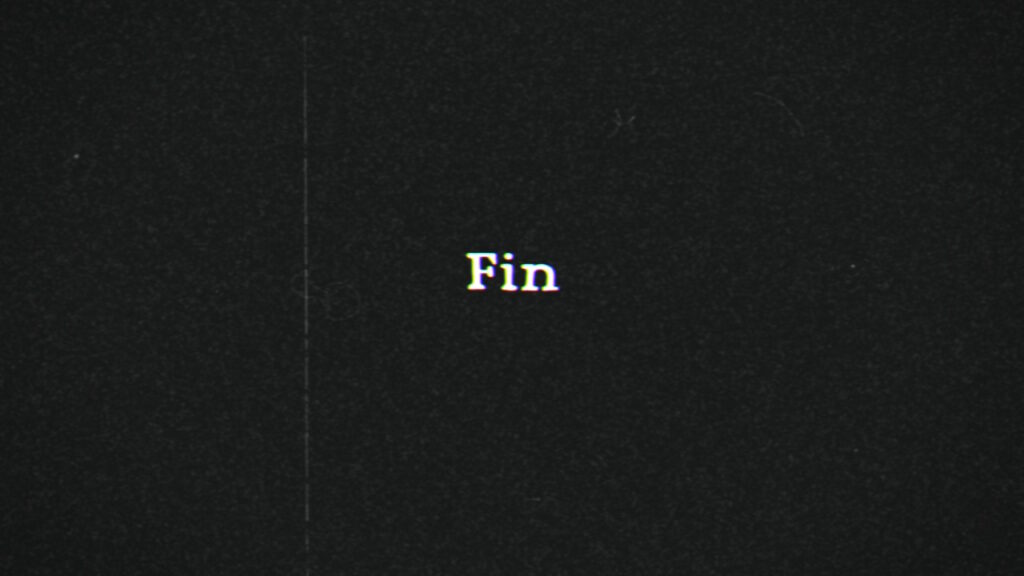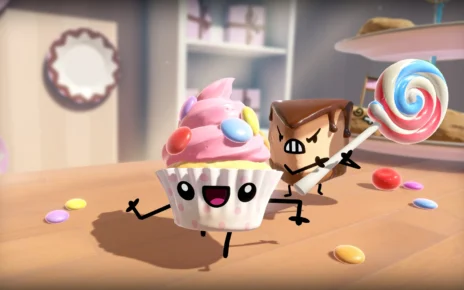I’m old enough to remember an era when The Disney Channel showed actual early Disney cartoons instead of the tween nonsense that fills the airwaves now. The art style of those early animated shorts is distinctive and unique. Every character appears to be on a loop, repeating the same life-affirming idle “dance” as action happens around it. Frames are filled with tiny imperfections, a side effect of the effort-intensive manual nature of early animation. Decades away from digital-to-digital transfers, early footage on a standard definition TV was dirty with warbled audio and stained film transfers.
It meant something to me, therefore, when Cuphead was announced as a tribute to those filmstrips of old. The gaming market – especially indie titles – are overwrought with pixel art and other “old school” tributes, enough to make a jaded gamer appreciate the occasional hand-drawn title. Cuphead takes it to another level, though, and I won’t waste another word without confirming that it delivers on its promise in a way that melts my grumpy old man heart.
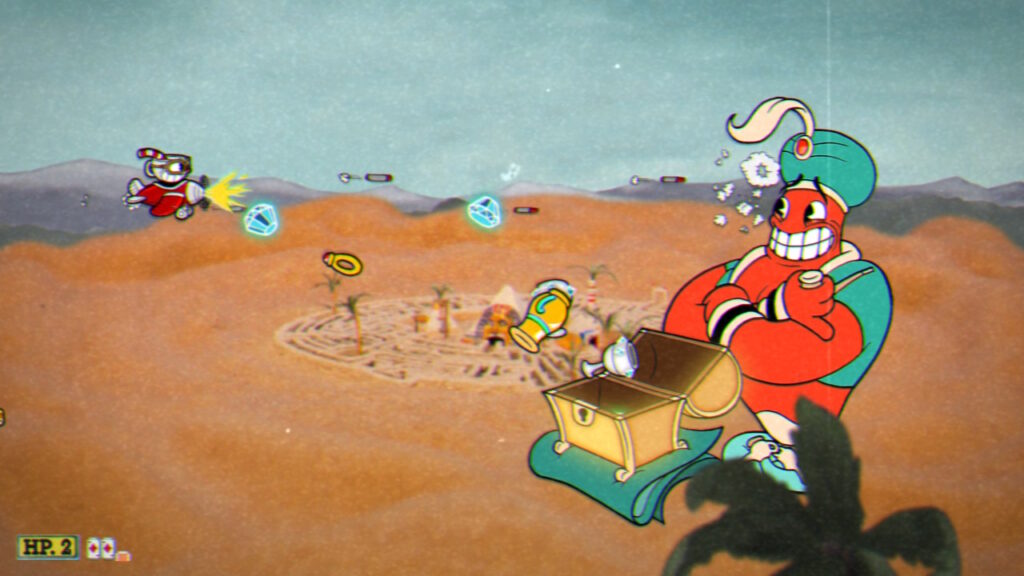
The aforementioned film grain is the first thing you notice when you boot up the Switch port of Cuphead, accompanied by the crackle and pop of a vinyl record being loaded and a dancing hourglass in the corner of the screen. Every inch of that hourglass warps and bounces as if it were made of aspic, and sure enough, it appears to be on a short loop as if to recycle the efforts of an overworked animator. The crackling analog audio gives way to the StudioMDHR logo and the WHAM of a jazz band hitting an accent. The title screen loads with two cheerful mugs (a LITERAL mug, in one instance) and the game logo, slightly grainy as if it were being shown on an old projector.
And then, you hear the barbershop quartet. “Well, it’s Cuphead… and his pal Mugman…”
Cuphead leans so hard into the early Disney aesthetic, it should topple the whole ruse over. Instead, the illusion just deepens, even to someone like me who’s going to be nitpicking looking for anachronisms and other stylistic choices that remind me the game launched the same year as the New Tappan Zee Bridge. I did find one detail of note. The game runs at a buttery 60 FPS, but a frame rate of 24 FPS would have been more cinematic and era-appropriate. Not that I blame them… Every frame sacrificed is a lost opportunity for precision, of which this game demands in abundance.
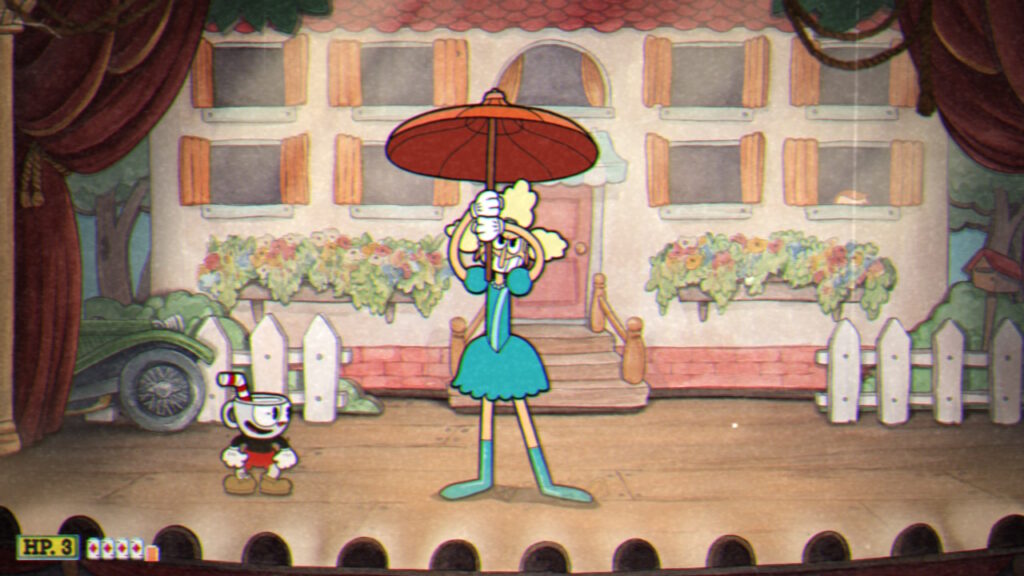
That brings me to the other aspect of Cuphead that gained so much notoriety: it’s brutally difficult. Underneath those cheery cartoon exteriors is a nightmare fueled by bullet hell, parries, evasive dashes, and enough senseless deaths to make even a Prinny raise an eyebrow. With the exception of a handful of run-and-gun levels, the game plays is a polished boss rush with most levels pitting you one-on-one against a monstrosity that dwarfs the titular hero in size and firepower. Mausoleums (the game’s one and only difficulty respite) teach the hero some new special attacks, and new weapons and abilities can be purchased from resident grumpypants Porkrind, but no upgrade is a magic bullet that turns a fight into a cakewalk.
I have little patience for overly difficult games, especially when that difficulty is the game’s primary selling point. Something about Cuphead, though, immunized it against losing its charm, even when my efforts seemed futile. The game’s boss rush format may be its greatest strength. Instead of slogging through a long, difficult platforming sequence only to have the boss wipe the floor with you, most encounters take less than two minutes, which makes jumping in after a brutal loss feel a lot less painful than it could. There are no continues, no unskippable cutscenes, and no fodder monsters between you and your foe; just a quick interstitial card to let you know how far you got into the battle, and a “Retry” option.
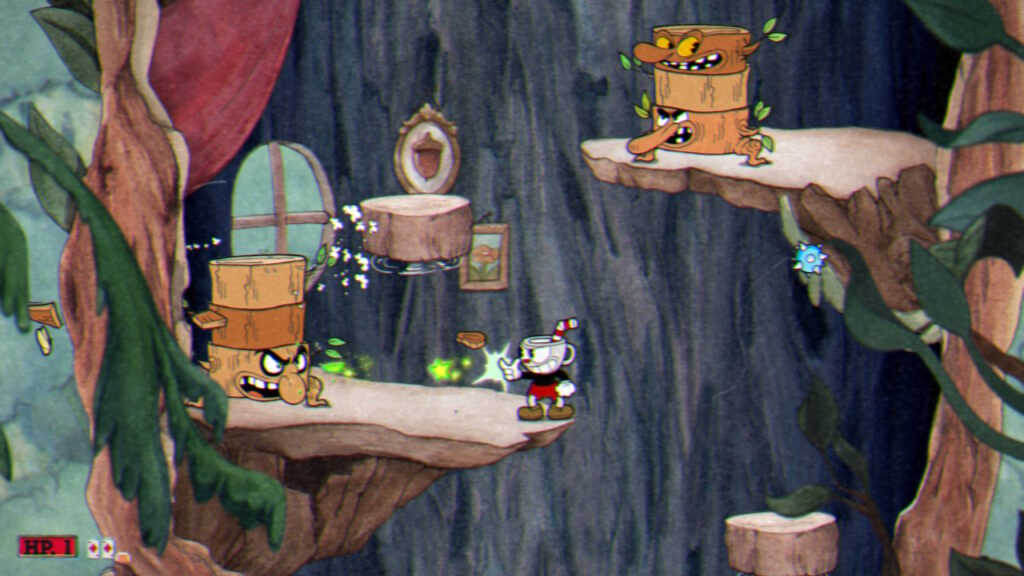
The Switch is the perfect platform for Cuphead. The short levels and lack of filler make it a perfect use for the Switch’s “pick up and play” concept, and the sharp platforming play make it a worthy colleague for Nintendo’s legion of mascot titles. Despite being such a match made in heaven, it’s a miracle the game made it to the Switch at all, given its position as an exclusive to Microsoft platforms. The evidence of this relationship still remains as Cuphead has a healthy allotment of achievements to be earned during gameplay, though the allocades are localized; they don’t contribute to any global system like Xbox Achievements or PlayStation Trophies.
On a really cynical level, Cuphead is just another game with a gimmick, but it executes that gimmick extremely well and only pulls back when it would threaten the appeal of the core gameplay. It achieves the “playing a cartoon” goal in ways of which the hastily cel-shaded titles of the sixth gaming generation could only dream. Yes, the game is shamelessly difficult, but it wields the difficulty less like a bludgeon and more like a piston, turning game sessions into addictive bite-sized affairs and not chores. I half-expected to have had my fill of Cuphead by the time the credits rolled, but here I am, game complete, wishing for a second course.
